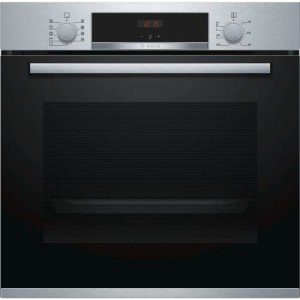The Rise of Built-In Ovens: A Seamless Approach to Modern Cooking
In contemporary cooking areas, where style looks blend seamlessly with performance, one home appliance stands out as a true game changer: the built-in oven. As property owners and chefs alike continue to look for innovative options that enhance their cooking experience, built-in ovens have actually become progressively popular. This short article checks out the advantages, factors to consider, and trends surrounding built-in ovens, highlighting why they are a vital feature in contemporary cooking areas.
What is a Built-In Oven?
A built-in oven is a cooking area appliance designed to be integrated into the cabinets of a kitchen area rather than standing alone. Unlike traditional freestanding ovens, which can be moved and positioned anywhere, built-in ovens can be found in various designs and sizes to fit specifically within designated areas. Available in single or double setups, these ovens provide a streamlined look that matches contemporary cooking area designs.
Advantages of Built-In Ovens

1. Space-Saving Design
Among the most enticing benefits of built-in ovens is their space-saving design. By integrating the oven into cabinetry, you can maximize valuable counter and flooring space. This is particularly advantageous in smaller kitchen areas, where optimizing space is vital. Built-in ovens can be installed at eye level, making them more available and reducing the requirement to bend down.
2. Aesthetic Appeal
Built-in ovens add to a streamlined and cohesive cooking area design. Offered in different surfaces-- such as stainless steel, black, white, and custom kitchen cabinetry-- they can blend seamlessly into the overall design. This aesthetic appeal improves the cooking area's visual consistency and elevates the space, developing a contemporary and advanced atmosphere.
3. Improved Functionality
Lots of built-in ovens come geared up with innovative cooking technologies, such as convection cooking, steam ovens, and wise features. These improvements permit versatile cooking choices, making it simpler to achieve professional-level results in your home. integrated ovens uk built-in ovens can even link to Wi-Fi, making it possible for users to control the oven from another location, get alerts, and access a variety of cooking programs and dishes.
4. Enhanced Ventilation
Due to the fact that built-in ovens can be integrated with kitchen hoods and ventilation systems, they can help preserve better air quality and reduce cooking odors. This is specifically significant for those who enjoy to cook with fragrant spices and components, as a reliable ventilation system can keep the cooking area comfortable and welcoming.
5. Personalization Options
Built-in ovens use a large range of modification alternatives to fit specific cooking styles and requirements. From professional-grade home appliances with multiple cooking modes to compact designs for smaller sized kitchen areas, house owners can select the oven that fits their particular requirements. Many manufacturers also provide customizable front panels, permitting you to match the oven's look to your kitchen cabinetry for a genuinely merged appearance.
Factors to consider When Choosing a Built-In Oven
While built-in ovens have lots of advantages, there are important considerations to remember before making a purchase:
1. Cost
Built-in ovens generally come with a higher price than their freestanding counterparts due to their style and installation requirements. It's crucial to consider both the expense of the oven and any additional expenditures connected to cabinets adjustments or setup.
2. Setup Requirements
Installing a built-in oven typically requires professional help, particularly if you require to customize existing cabinetry. Make sure that you consider any expenses connected with setup, including labor and potential kitchen cabinetry modifications.
3. Size and Dimensions
Before purchasing a built-in oven, measure the designated space precisely to ensure an appropriate fit. Built-in ovens been available in various sizes and setups, so choosing one that lines up with your needs and kitchen area design is vital.
4. Lifestyle and Usage
Consider your cooking practices and requires when picking a built-in oven. If you often host big events, a double oven may be more advantageous. On the other hand, if you have a compact kitchen area, a single-wall oven may suffice.
Trends in Built-In Ovens
The kitchen appliance market is continually evolving, and built-in ovens are not exempt from emerging trends. Some present trends consist of:
Smart Technology Integration: With the increase of clever home innovation, built-in ovens now often feature connectivity options. This allows users to keep an eye on cooking development and change settings through mobile apps.
Energy Efficiency: As sustainability ends up being a priority, numerous producers are buying energy-efficient built-in ovens that reduce energy intake while preserving performance.
Multi-functional Designs: Built-in ovens now provide functions such as air frying, sluggish cooking, and steaming, supplying adaptability that meets a large range of cooking approaches.
Conclusion
Built-in ovens unquestionably represent a best blend of style, function, and convenience in today's cooking areas. As more property owners select this modern-day option, the focus moves to producing a cooking area that is as aesthetically pleasing as it is practical. Whether you are constructing a new home or remodeling your cooking area, considering a built-in oven might elevate your culinary experience and transform your cooking area into an elegant and functional sanctuary. With an array of alternatives readily available and ongoing developments in innovation, built-in ovens stay a standout option for both amateur cooks and cooking lovers alike.
